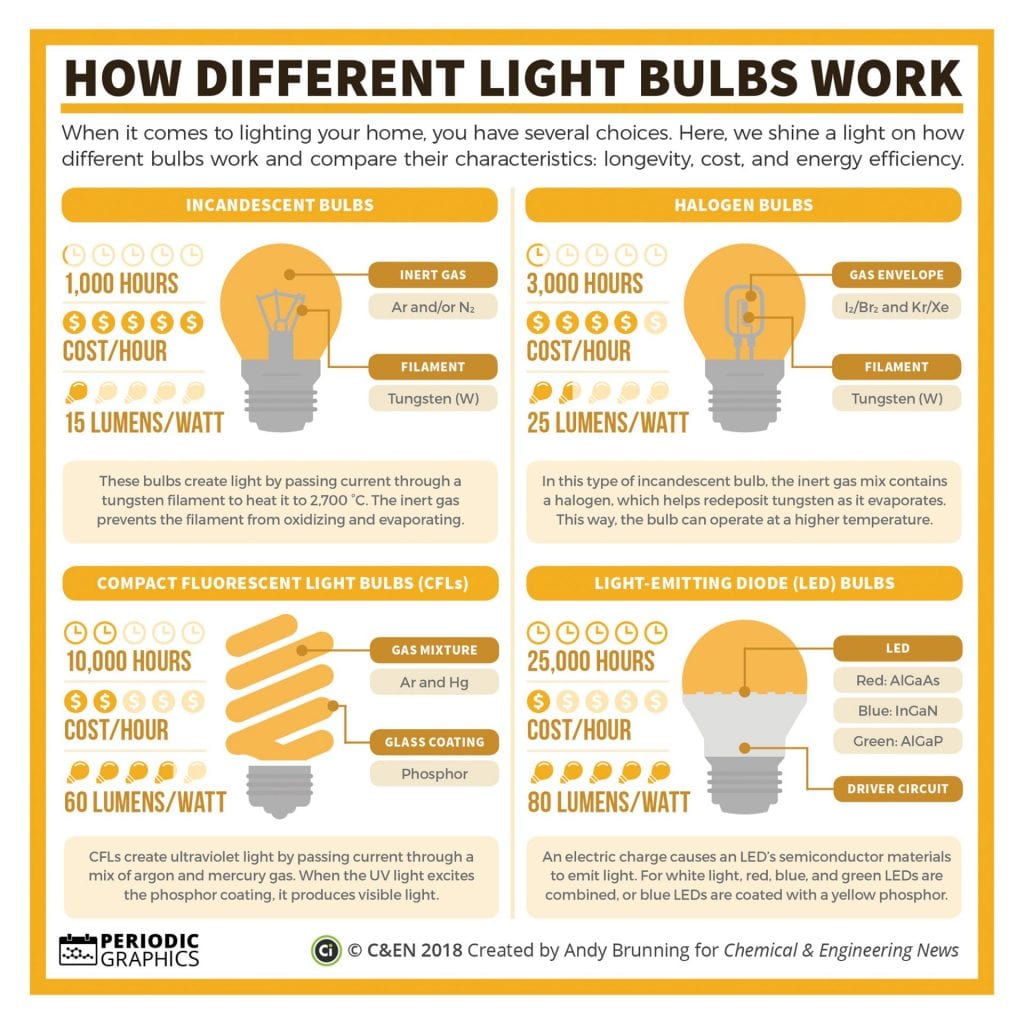
This graphic was created by Andy Brunning for Chemical & Engineering News.

This graphic was created by Andy Brunning for Chemical & Engineering News.
Check out this graphic made by Andy Brunning, author of the popular graphics blog “Compound Interest.”

To see more of Brunning’s work, go to compoundchem.com. To see all of C&EN’s Periodic Graphics, visit cenm.ag/periodicgraphics.
Nothing says fall quite like a pumpkin. From Jack O’ Lanterns and coffee flavors, to center pieces for your Thanksgiving table, this seasonal squash is an autumn staple. Let’s take a look at the chemistry that has us falling for pumpkins year after year.

Wait, so my pumpkin spice treat isn’t really pumpkin?
 Nope! And your pumpkin pie probably isn’t either. The “pumpkin” used in your pie is actually a specially bred sweet squash that is less watery and fibrous than your typical carving pumpkin. Both pumpkin pie and pumpkin spice flavored foods rely more on their blend of cinnamon, nutmeg, ginger, and clove than the gourd itself for their flavor. Since natural spices don’t produce consistent flavoring in large-scale commercial food production, the molecules that produce the flavor in these spices (cinnamaldehyde & pinene are among these) are often added instead.
Nope! And your pumpkin pie probably isn’t either. The “pumpkin” used in your pie is actually a specially bred sweet squash that is less watery and fibrous than your typical carving pumpkin. Both pumpkin pie and pumpkin spice flavored foods rely more on their blend of cinnamon, nutmeg, ginger, and clove than the gourd itself for their flavor. Since natural spices don’t produce consistent flavoring in large-scale commercial food production, the molecules that produce the flavor in these spices (cinnamaldehyde & pinene are among these) are often added instead.
You can read more about the flavor chemistry of your favorite fall treats in this Chemical & Engineering News article.
 Photo Credit: Caltech; University of Missouri; and MRC Laboratory of Molecular Biology
Photo Credit: Caltech; University of Missouri; and MRC Laboratory of Molecular Biology
“The 2018 Nobel Prize in Chemistry was awarded to Frances H. Arnold of California Institute of Technology for the directed evolution of enzymes and to George P. Smith of the University of Missouri and Gregory P. Winter of the MRC Laboratory of Molecular Biology for the phage display of peptides and antibodies. Arnold will receive half of the approximately $1 million prize; Smith and Winter will split the other half equally,” wrote Celia Henry Arnaud of Chemical & Engineering News. Arnold is just the second woman to win the prize in the past 50 years.
Learn more about the development and uses of directed evolution enzymes and the phage display of peptides and antibodies at Chemical & Engineering News, Nature International Journal of Science, and The Nobel Prize.
As an OSU Chemistry and Biochemistry alumnus, Associate Professor Zac Schultz ‘00 was excited to bring his research program to CBC, and to indulge in the Columbus community, which has changed immensely since his time as a student, he stated. “Columbus today is a dynamic and vibrant metropolitan area that my family and I look forward to living and working in.” Dr. Schultz said.
As an undergraduate at OSU, Zac wanted to become a Biochemist, until a professor convinced him to jump ships; he’s stuck with Chemistry ever since. “I really enjoy understanding how things  work and chemistry lets me explore this at a molecular level, which allows me to explore many different applications and areas,” Zac explained. His current research looks to harness advancements in lasers and nanomaterials to develop disease diagnostic technology, catalysts, and build on science that will enable even more developments. Nanomaterials developed in his lab even have the potential utility for converting carbon dioxide into fuels. “The possibility that our research may prevent or help treat diseases, such as cancer, or help solve environmental and energy challenges is really motivating. At the same time, working with students and training the next generation of scientists in my laboratory is equally rewarding. I see my research as way to impact the future.”
work and chemistry lets me explore this at a molecular level, which allows me to explore many different applications and areas,” Zac explained. His current research looks to harness advancements in lasers and nanomaterials to develop disease diagnostic technology, catalysts, and build on science that will enable even more developments. Nanomaterials developed in his lab even have the potential utility for converting carbon dioxide into fuels. “The possibility that our research may prevent or help treat diseases, such as cancer, or help solve environmental and energy challenges is really motivating. At the same time, working with students and training the next generation of scientists in my laboratory is equally rewarding. I see my research as way to impact the future.”
Oxygen tanks are a vital part of any scuba diver’s gear – but not all oxygen tanks are the same. Check out this infographic to learn about various types of diving air mixes and their uses.